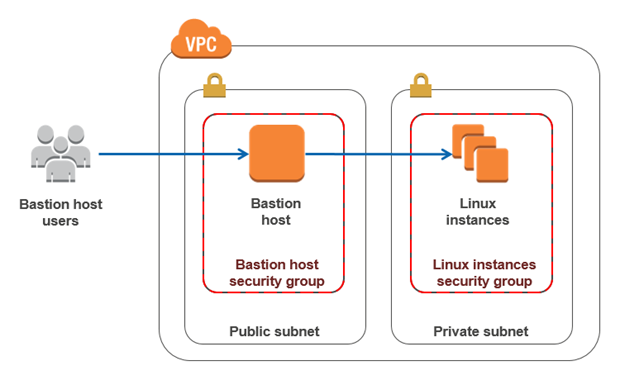AWS Security Blog
Category: Amazon VPC
How to add DNS filtering to your NAT instance with Squid
September 23, 2020: The squid configuration file in this blog post and associated YAML template have been updated. September 4, 2019: We’ve updated this blog post, initially published on January 26, 2016. Major changes include: support of Amazon Linux 2, no longer having to compile Squid 3.5, and a high availability version of the solution […]
How to set up an outbound VPC proxy with domain whitelisting and content filtering
November 16, 2020: We’ve updated the CloudFormation template and the launch stack URL used in this solution. July 24, 2019: We’ve added a link to a GitHub repository that contains the stack content for this solution. Controlling outbound communication from your Amazon Virtual Private Cloud (Amazon VPC) to the internet is an important part of […]
How to Connect Directly to AWS Key Management Service from Amazon VPC by Using an AWS PrivateLink Endpoint
AWS Key Management Service (AWS KMS) now supports Amazon Virtual Private Cloud (Amazon VPC) endpoints powered by AWS PrivateLink. This means you now can connect directly to AWS KMS through a private endpoint in your VPC, keeping all traffic within your VPC and the AWS network. Previously, applications running inside a VPC required internet access […]
How to Automatically Revert and Receive Notifications About Changes to Your Amazon VPC Security Groups
In a previous AWS Security Blog post, Jeff Levine showed how you can monitor changes to your Amazon EC2 security groups. The methods he describes in that post are examples of detective controls, which can help you determine when changes are made to security controls on your AWS resources. In this post, I take that […]
AWS Earns Department of Defense Impact Level 5 Provisional Authorization
The Defense Information Systems Agency (DISA) has granted the AWS GovCloud (US) Region an Impact Level 5 (IL5) Department of Defense (DoD) Cloud Computing Security Requirements Guide (CC SRG) Provisional Authorization (PA) for six core services. This means that AWS’s DoD customers and partners can now deploy workloads for Controlled Unclassified Information (CUI) exceeding IL4 […]
How to Record SSH Sessions Established Through a Bastion Host
A bastion host is a server whose purpose is to provide access to a private network from an external network, such as the Internet. Because of its exposure to potential attack, a bastion host must minimize the chances of penetration. For example, you can use a bastion host to mitigate the risk of allowing SSH […]
How to Set Up DNS Resolution Between On-Premises Networks and AWS by Using Unbound
In previous AWS Security Blog posts, Drew Dennis covered two options for establishing DNS connectivity between your on-premises networks and your Amazon Virtual Private Cloud (Amazon VPC) environments. His first post explained how to use Simple AD to forward DNS requests originating from on-premises networks to an Amazon Route 53 private hosted zone. His second […]
How to Optimize and Visualize Your Security Groups
September 9, 2021: Amazon Elasticsearch Service has been renamed to Amazon OpenSearch Service. See details. May 3, 2017: We published a related blog post also written by Guy Denney, How to Visualize and Refine Your Network’s Security by Adding Security Group IDs to Your VPC Flow Logs. Many organizations start their journey with AWS by experimenting […]
How to Help Prepare for DDoS Attacks by Reducing Your Attack Surface
Distributed denial of service (DDoS) attacks are sometimes used by malicious actors in an attempt to flood a network, system, or application with more traffic, connections, or requests than it can handle. Not surprisingly, customers often ask us how we can help them protect their applications against these types of attacks. To help you optimize […]
How to Address the PCI DSS Requirements for Data Encryption in Transit Using Amazon VPC
The PCI requirements for encryption for data in transit are different for private networks than they are for public networks. When correctly designed, Amazon Virtual Private Cloud (Amazon VPC), a logically isolated portion of the AWS infrastructure that allows you to extend your existing data center network to the cloud, can be considered a private network, […]








